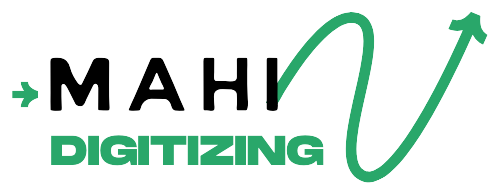3D embroidery has gained immense popularity across fashion, branding, and sportswear. But what’s the real difference between 3D puff applique and 3D puff embroidery? At Mahi Digitizing, we break down both techniques to help you decide which is best for your design needs.
What Is 3D Puff Embroidery?
3D puff embroidery involves stitching over a foam layer to create raised designs that stand out from the fabric. This technique is commonly used on caps, jackets, and sports apparel for bold logos and lettering.
The foam gives the embroidery depth and volume, making designs feel tactile and more dynamic. It’s especially effective for short, blocky letters or simple icons.
To achieve the 3D effect, digitizers must use special underlays and stitching techniques to cover the foam while maintaining shape and durability.
This technique works best with satin stitches and strong thread tension to hold the foam securely in place during wear and wash.
3D puff embroidery is ideal for designs that need to stand out visually and physically, offering a bold branding presence for logos and monograms.
At Mahi Digitizing, we offer precision digitizing to ensure puff embroidery designs look sharp and last long.
What Is 3D Puff Applique?
3D puff applique combines foam padding with fabric cutouts that are stitched onto a garment, giving it texture and dimension with less stitching compared to full embroidery.
Instead of fully stitching a design, applique uses pre-cut fabric shapes to form letters or logos, which are then puffed with foam underneath and outlined with embroidery.
This allows for bold and colorful designs with less thread density, saving time and cost while maintaining visual impact and volume.
The applique fabric can be cotton, twill, felt, or specialty materials, allowing for diverse textures and finishes depending on the design’s purpose.
3D puff applique works best for larger designs where fabric details enhance appearance and reduce heavy stitching on lightweight garments.
Our team at Mahi Digitizing crafts applique files that ensure clean cuts, smooth edges, and stable foam coverage.
Key Differences in Materials and Techniques
3D puff embroidery uses thread exclusively to create the raised design, whereas 3D puff applique includes both fabric pieces and embroidery outlines.
While both use foam to create depth, embroidery relies on dense satin stitches to hold the foam, while applique uses fabric and fewer stitches to anchor the foam in place.
This difference affects production time, with applique often being quicker and less thread-intensive, particularly for larger areas or block-style letters.
Embroidery is more versatile for small or detailed designs, while applique is better suited for bold, colorful, and textured results across broader surfaces.
Foam thickness also plays a role; embroidery usually uses 2–3mm foam, while applique can adapt to thicker foam for exaggerated depth and style.
Understanding these technical distinctions helps you choose the right process for your garment type and design vision.
Visual and Textural Effects
3D puff embroidery gives a uniform, sleek raised effect, ideal for brand logos and minimalistic designs where symmetry and polish matter.
Applique, on the other hand, adds a layered look due to the fabric material and creates a multi-dimensional feel that’s both visual and tactile.
The fabric texture in applique adds depth and contrast, making it perfect for retro designs, varsity-style lettering, and fashion-forward applications.
Embroidery provides a glossier, denser thread surface, whereas applique offers matte or patterned textures depending on the fabric used.
This makes applique a great way to add visual variety, especially when combining multiple colors, materials, or custom prints in a single design.
You can preview these effects through sample mockups from our digitizing experts before final production.
Which One Should You Choose?
If you want a classic embroidered look with depth and long-term durability, 3D puff embroidery is the right choice for hats, logos, and bold branding.
Choose 3D puff applique if you prefer colorful fabric textures, reduced stitching, or want to make larger or layered designs with cost-efficiency.
Apparel designers often combine both for unique hybrid looks—using embroidery for outlines and applique for filler or highlights.
Consider your budget, garment material, and design complexity before selecting the technique. Our team helps with digitizing based on all these factors.
For high-volume apparel or fashion items, applique might reduce production costs while maintaining impressive results.
Not sure what works best? Contact our Mahi Digitizing team for a free consultation.
Final Thoughts and Recommendations
Both 3D puff applique and 3D puff embroidery offer stunning visual appeal and brand distinction. The right choice depends on your style goals and application.
If you’re looking for bold, thread-rich designs with durability, embroidery is your go-to. For variety, texture, and speed, applique is the better option.
Don’t forget to consider garment type and fabric compatibility—some materials work better with applique than dense embroidery stitches.
Our team specializes in high-quality digitizing tailored for each method, ensuring smooth stitching, stable foam integration, and standout designs.
Explore our digitizing services to see how we bring your vision to life with precision and flair.
Whether you’re launching a fashion line or producing team gear, trust Mahi Digitizing for expert support, quality outputs, and creative guidance.

